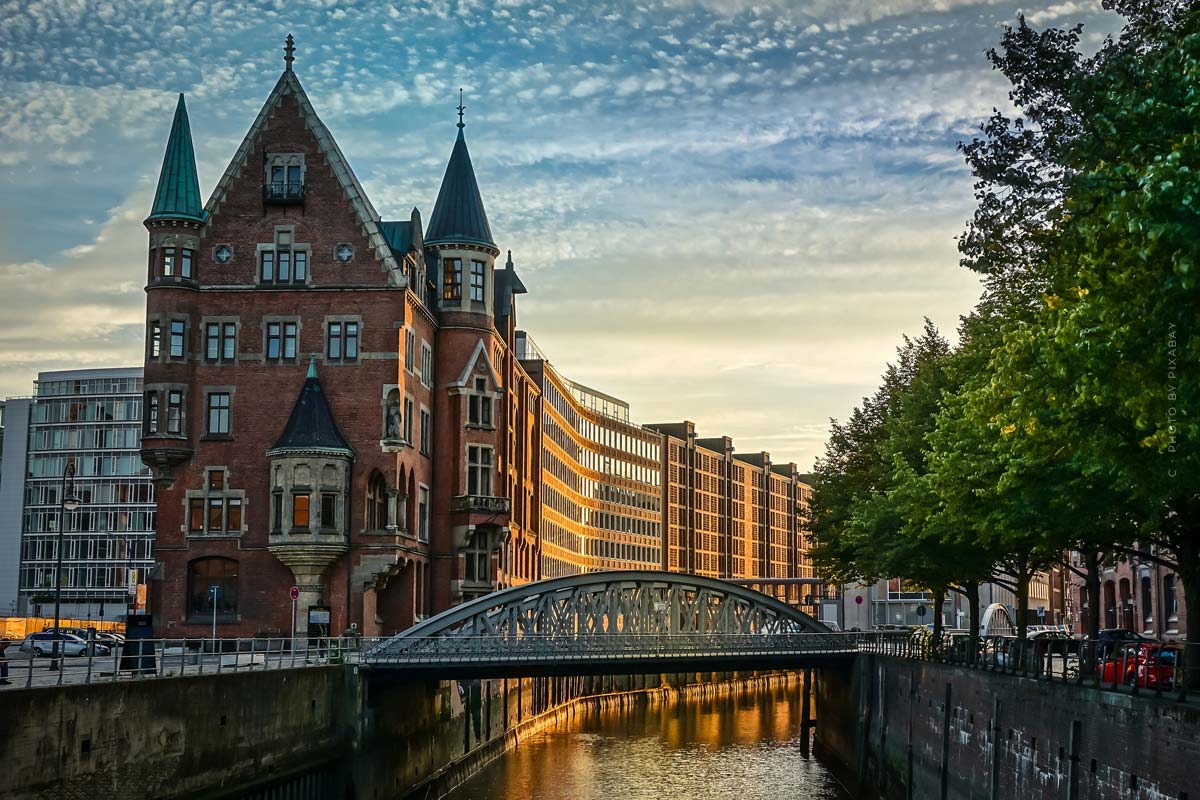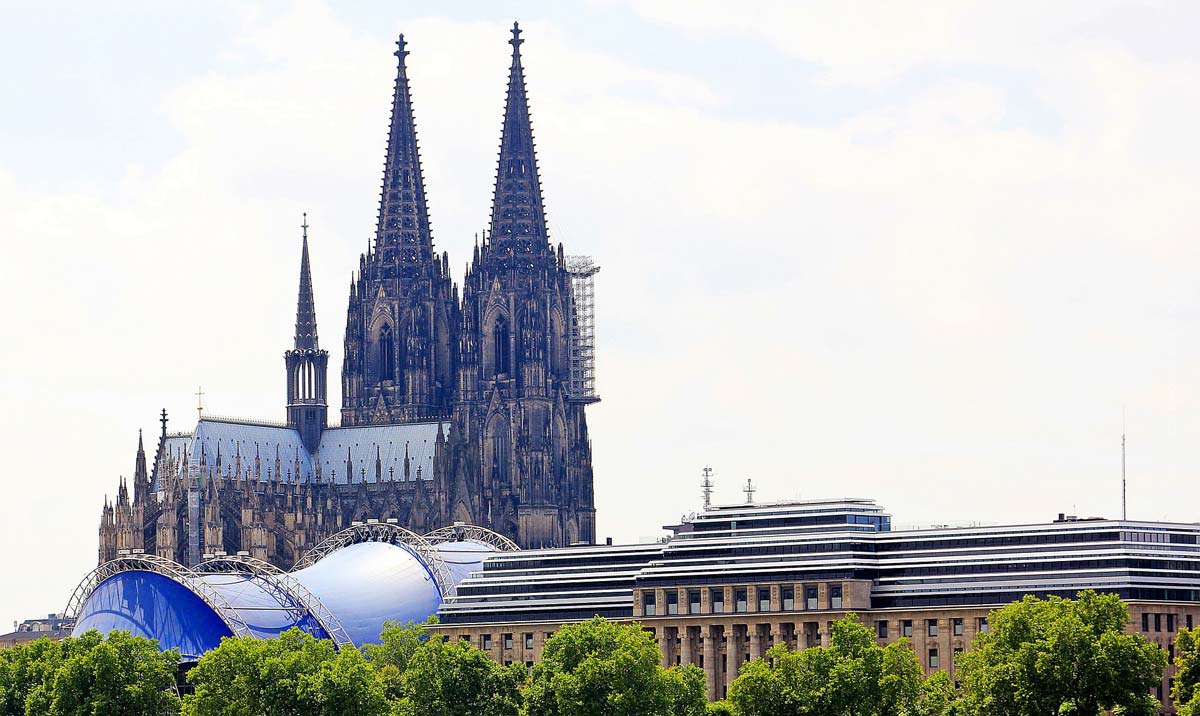Moving Munich: Apartment & House and most popular districts
Moving Munich – The Bavarian capital is one of the favorite destinations for many people. The city boasts great architectural charm and its location in the countryside. In addition, the close proximity to the Alps and Switzerland is great for people who like to get away from it all. Many are regularly drawn to the popular metropolis, but what should actually be considered when moving to Munich? Which districts are the most popular and which neighbourhood suits you best? Here you will find all the information about Munich’s districts and what makes each district special, so you can find your perfect future place to live in Munich!
Schwabing: Chic district with park & historic villas
Munich Schwabing is probably one of the best known districts of the big city. It is a chic district that tends to be considered a more exclusive residential area. Especially Schwabing- Freimann is known for exclusive fashion, jewelry and traditional costume boutiques, as well as gourmet restaurants and numerous wine bars. Schwabing is also home to the beautiful English Garden, which invites you to linger and stroll. The district is particularly charming due to its numerous Art Nouveau buildings – which are typical for Munich. In addition, the Isar also flows through this district and thus beautifies the cityscape of the quarter. Schwabing is known as the bohemian quarter and is one of Munich’s most populous districts.
Parks, English Garden & Old Building Apartments
Munich Schwabing is without a doubt one of the more expensive areas of Munich, but it also has a lot to offer. Restaurants and cafés, as well as bars and shops are plentiful, and the proximity to the Isar and the English Garden make Schwabing particularly attractive. Many well-preserved art nouveau mansions offer apartments in old buildings with high ceilings and stucco. The district is also popular with artists and students, who are happy to pay a euro more rent for the charming ambience.
Key figures:
- Population: over 100,000
- Area: 25,6 km²
- Population density: approx. 4,700 inhabitants/km²
Altstadt-Lehel: old town flair and central location with shopping possibilities
Altstadt-Lehel is the first and at the same time the most central district of Munich. It is made up of the districts Altstadt and Lehel, whose residents still do not feel that they belong to each other, despite the merging of the districts. The Altstadt is an absolute highlight, especially for tourists, with many sights, shops and gastronomy. Lehel, on the other hand, is more of a typical, Munich residential district with many apartment buildings and flats. Besides the central location, the highlight is the daily (on weekdays) Viktualienmarkt, for which Munich is known far beyond the city limits and is considered a fixed institution. If you like it central and have no problem with hustle and bustle, Munich Altstadt-Lehel is exactly the right address.
City centre and Viktualienmarkt
If you live here, you don’t need a car or a bike for daily errands and activities. Here you are absolutely in the heart of the city and are well provided for in terms of entertainment: restaurants, cafés, bars, clubs and beer gardens, shops and shopping opportunities can be found here. The charm of Munich’s old town and historic city centre is unique, but you have to be prepared every day for tourists and visitors exploring the legendary city.
Key figures:
- Population: 21,126
- Area: 3,14 km²
- Population density: 6,716 inhabitants/km²
Pasing-Obermenzing: Regional markets and green city parks
The district of Pasing-Obermenzing is located in the west of Munich. Over 60,000 inhabitants live in this part of the Bavarian capital. The Pasinger Stadtpark invites you to take a leisurely stroll and Pasing-Obermenzing is particularly popular for its markets. The district is considered lively and has several restaurants and small boutiques, as well as its own shopping center, the Pasing-Arcaden. There is also the Pasing Cultural Center, which was built in a former industrial plant. In addition to rather nondescript residential buildings, you will also come across elegant villas in the quieter residential streets.
Large weekly markets: Pasing Viktualienmarkt
Pasing and Obermenzing are especially known for their lush and well-stocked weekly markets. Here you can buy mainly regional and fresh products from the producer, perfect for anyone who wants to eat sustainably and consciously. But you don’t have to be a foodie, a stroll through the colourful and fragrant stalls of the traders is also worth the visit. The Pasinger Viktualienmarkt, for example, is held regularly next to the town hall.
Key figures
- Population: 76,498
- Area: 16,5 km²
- Population density: 4,637 inhabitants/km²
Glockenbachviertel: Old buildings, Gärtnerplatz and party scene
With its well-maintained old buildings, the Glockenbachviertel is one of Munich’s most attractive residential districts. The neighbourhood borders Ludwig- and Isarvorstadt and the centrepiece is definitely Gärtnerplatz. The Isar can be reached quickly from here and on its banks you can sunbathe and relax at length. Around Gärtnerplatz you can find many shops and businesses, as well as restaurants and cafés that invite you to linger. Munich’s party people also get their money’s worth here, as there are various bars and clubs: partying is a big thing here. In this context, the Glockenbachviertel is also known especially for the gay scene.
Gärtnerplatz: Restaurants, Café & Clubs
The Glockenbachviertel is especially popular with young and party-loving Munich residents and visitors. The nightlife here is dynamic and colorful and invites you to escape from everyday life and just have fun. So this neighborhood is less suitable for families or people looking for a quiet retreat. Young people such as students, or couples and singles are in particularly good hands here.
Key figures:
- Population: 12,199
- Area: approx. 1 km²
- Population density: 12,199 inhabitants/km²
Westend/ Schwanthalerhöhe: Upcoming district for students and young families
The Westend or Schwanthalerhöhe is considered an up-and-coming district in Munich. The district is especially known for its unconventional artistic community. Kebab stands can be found here as well as cosy bars and restaurants with international cuisine such as Thai or Japanese. Small designer shops have also settled here in the meantime. Culturally, the Westend has a lot to offer, including fancy little theaters where you can experience something every day. Here is also the towering statue of the Bavaria, which offers a wide view over the Bavariapark. In addition, the traffic center of the German Museum in the exhibition hall of 1908 is also located here, which is worth a visit.
Up-and-coming artists’ quarter with theatres and art galleries
The Westend/ Schwanthalerhöhe is an insider tip among Munich’s districts. The alternative artist scene of the big city cavorts here, making the district an exciting and atmospheric part of town where you can always experience something. The district is – unlike the city centre – not overcrowded and you can immerse yourself in the world of the arts without having to leave the city. This neighbourhood is perfect for the adventurous and those interested in culture.
Key figures:
- Population: 29,611
- Area: 2,07 km²
- Population density: 14,303 inhabitants/km²
Maxvorstadt: district for students & proximity to the university
The Maxvorstadt in Munich is also called the university quarter and is one of the most vibrant parts of Munich. The cityscape is characterized by some architectural highlights like the museums and the Königsplatz. This flair is mixed with university feeling and several cafés, restaurants and smaller clubs. Maxvorstadt is home to the city’s most important museums as well as three large universities. Here students meet academics and art lovers. On the roof terrace of the Technical University, for example, you have a great view over Munich and the Pinakothek – in good weather even to the Alps.
University district for students and young people
Maxvorstadt is particularly popular with students due to its close proximity to colleges and universities. Since they primarily settle here, they also lower the average age of the residents and promote the nightlife and gastronomy. Therefore, many restaurants, bars and small clubs can be found here. If you are studying in Munich or feel like taking part in student life, Maxvorstadt is the perfect place to be.
Key figures:
- Population: 4.29 km²
- Area: 4,3 km²
- Population density: 12,060 inhabitants/km²











